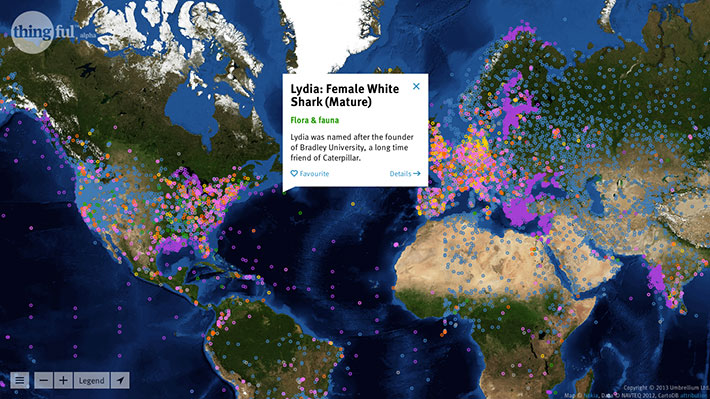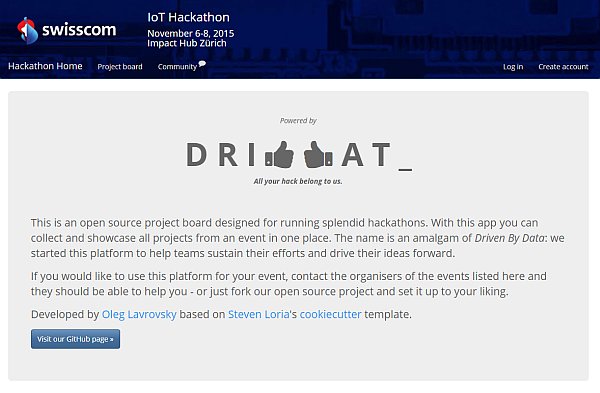An Internet of Open Things to tell Stories

Once upon a time, this weekend of November 6-8, 2015, an Internet of Things (IoT) Hackathon [SOLD OUT] will take place at a leading Swiss telecom and run in parallel to the Virtual Reality (VR) Hackdays [PLACES AVAILABLE!] at a leading Swiss media house. Devices spew data all over the place, something we have known about for some time, and explored on occasion. Where there is data – you can bet your horses, there will be stories to tell. The enthusiasm of the IoT event team got me:
Within the near future, there will be a continuously increasing number of items, which will be equipped with sensors and that will interact and collect data, then communicate this data through the internet with users and systems. […] Every team will have access to a Low Power Network Developer Kit, an Application Enablement Platform and an Application Cloud account. The location will be equipped with beacon technology and the teams will have access to the mobile application SDK.
Excerpted from full programme at iot-hackathon.swisscom.com
Through Thomas Amberg, veteran open data hacker and organiser of the thriving IoT-Zürich community, I got plugged into advising (pro bono) the adventurous team behind this initiative. In this I focused on the qualities of a good hackathon: supportive atmosphere, proliferating diversity, clearly documented goals and conditions (i.e. “Swisscom does not claim any license or any intellectual property in participant’s submission”).
A grant from Swisscom made it possible to rapidly develop DRIBDAT: a new open source platform for sharing projects at the hackathon. Participants get a link to this site where they can share projects with each other and interact in a temporary online community which has a singular focus of accelerating their progress at the hackathon.
On the very same date and just a Steinstossen away the NZZ Hackdays were announced for “storytelling with Google Cardboard”, an event that I would love to bring my stack of single wall C-Flute and affection for all things 3-dimensional to. The organisers of the two hackdays will bridge the events with tours and sync-ups: IoT teams will have a great opportunity to think “out of the box”, while the VR guys and gals will get tons of location-based real-time data to augment their realities with as needed.
On Friday, I am going to this event as a participant, not organiser. (Phew :) As followers may know, I spent most of the summer working on Synopses, which involved looking at lots of medical applications, thinking about health data, talking to doctors and patients about their needs, and piecing together smart patient profiles. Clearly this is an exciting area to apply efforts to. Smart devices can tell us a lot about our health conditions, even if they are indirectly measuring our vital signs, while smartphones are being touted as vehicles to a revolution in medicine. So one thing I plan to do at the hackathon is to see who else is interested in publishing their heartbeat online ❤
The question arises of how to securely, transparently and effectively publish all that IoT sensor output for consumption in our VR headsets. The landscape of cloud data service providers and platforms providing special support for device data is rapidly changing, and When Sensors and Open Data Collide shares some compelling arguments about open thinking in the wake of IoT and smart cities in the cloud:
hackers, hobbyists and enterprises building the next generation of smart cities with real velocity…open pathways for data to be exchanged allowing us all to benefit from advances in technology, without a cost to our built environment…best of breed engineering whilst retaining our community roots… ‘Open’ may mean sharing data with your neighbour, your street, your city. Most importantly make it economically attractive for all enterprises to make data available in some form, even if it’s not ‘open’ in the purest sense.
While at Open Knowledge – which, by the way, has an Open Hardware & Design group – we strive to accelerate adoption of open platforms and data according to the full Open Definition, it is great to see high quality services like Thingful, ThingSpeak and OpenSensors.IO provide open APIs, based on open source, encouraging data reuse under open licenses for the connected city. The days of Pachube’s wild wild west may be behind us, but a sense of perspective is crucial as an entire industry emerges around these trends and technologies.

At one point I think we should pause and ask ourselves some fundamental questions, like: is the platform and its standards as hackable and upgradable as the Web? Will the data produced continue to be accessible by us for years to come? Are we fully supported in visualising, correlating and analysing every part of the data ourselves? What risk on our privacy is there when third parties collect it? Is it reusable for startups and scientific and commercial research?
Or, perhaps, instead of thinking about the Internet and Things we should really be “thinking about the complex system of interaction between humans and things“.
A room full of sensors, networks and talented motivated people may be just the place to do that. See you there! Thoughts, comments that can’t wait until Friday night? Leave a tweet or a note.


